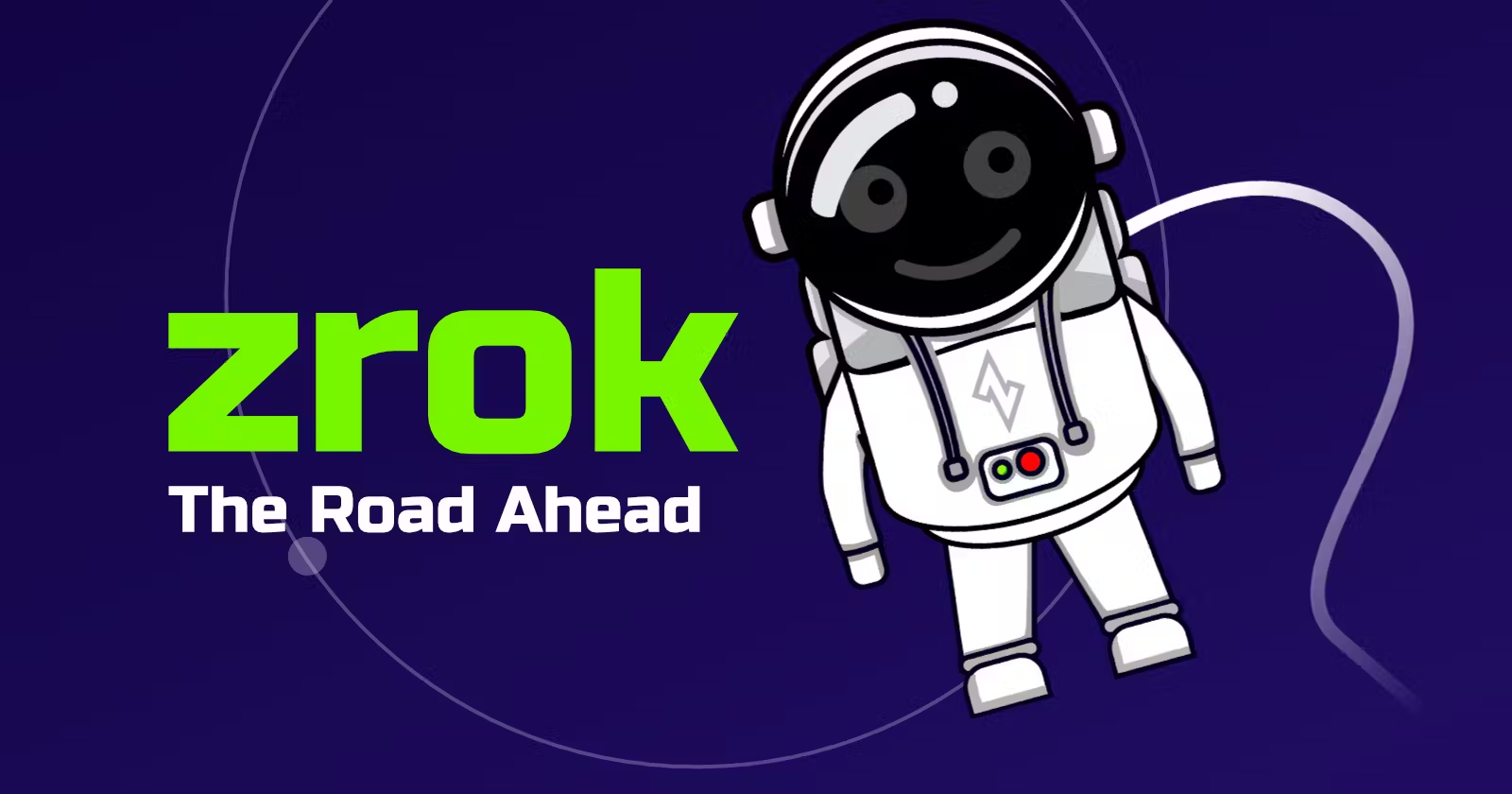Unveiling OpenZiti and Zrok
 Nehal Ingole
Nehal IngoleTable of contents

Introduction
In today's digital age, where data security is paramount, the need for robust networking solutions has never been greater. Enter OpenZiti, an innovative open-source platform that is reshaping the landscape of secure networking. In this blog, we will delve into what OpenZiti is, its core features, its benefits, and how it is transforming the way developers build secure, distributed applications.
What is OpenZiti
OpenZiti is an innovative open-source platform that provides a software-defined perimeter (SDP) solution for building secure, distributed applications. It is developed by Ziti, a company focused on revolutionizing the way developers approach networking and security challenges.
OpenZiti adopts a zero-trust networking approach, meaning that it treats all network traffic as potentially malicious and requires verification and authentication before granting access. It creates a secure overlay network that abstracts the underlying infrastructure, allowing applications to communicate securely regardless of their physical location or network environment.
Let's continue with the example
Let's consider an example scenario where a company wants to build a secure, distributed application that allows employees to access internal services from remote locations. The company decides to use OpenZiti to create a secure overlay network for their application.
Setup: The company installs and configures the Ziti Edge Controller, Ziti Edge Routers, and Ziti Identity Service according to their requirements. They define policies that specify which users and devices are allowed to access specific services within the network.
Authentication: Employees install the Ziti client software on their devices and register with the Ziti Identity Service. The Identity Service issues cryptographic certificates and tokens that are used to authenticate the devices when connecting to the network.
Access Control: The Ziti Edge Routers enforce access control policies defined by the Edge Controller. When an employee tries to access a service, the Edge Router verifies their identity and ensures that they have the necessary permissions to access the service.
Secure Communication: Once authenticated and authorized, the employee's device establishes a secure communication channel with the service through the Ziti network. All traffic between the device and the service is encrypted and protected from eavesdropping and tampering.
Monitoring and Management: The company can monitor and manage the Ziti network using the Edge Controller's user interface and APIs. They can view real-time network traffic, audit access logs, and adjust policies as needed to ensure security and compliance.
Core Features of OpenZiti
Zero Trust Architecture: OpenZiti adopts a zero-trust approach to networking, meaning that it assumes all network traffic is potentially malicious and must be verified and authenticated before access is granted. This ensures that only authorized users and devices can communicate with each other, minimizing the risk of unauthorized access and data breaches.
Software-Defined Perimeter (SDP): OpenZiti leverages SDP technology to create a secure overlay network that abstracts the underlying infrastructure and provides a secure communication channel between applications, regardless of their physical location or network environment. This allows developers to build distributed applications that are resilient to network attacks and failures.
Developer-Friendly APIs: OpenZiti provides a set of developer-friendly APIs and libraries that make it easy to integrate secure networking capabilities into existing applications or build new applications from scratch. Whether you're developing a web application, mobile app, or IoT device, OpenZiti's APIs make it simple to implement secure communication protocols without compromising performance or scalability.
Scalability and Performance: OpenZiti is designed to scale effortlessly to meet the demands of modern distributed applications. Whether you're deploying a small-scale prototype or a large-scale production environment, OpenZiti's architecture ensures high performance and low latency, enabling seamless communication between services and devices.
Benefits of OpenZiti
Enhanced Security: By adopting a zero-trust architecture and software-defined perimeter, OpenZiti provides unparalleled security for distributed applications, protecting against a wide range of cyber threats and attacks.
Simplified Development: OpenZiti's developer-friendly APIs and libraries streamline the development process, allowing developers to focus on building features rather than worrying about security concerns.
Increased Flexibility: OpenZiti's platform-agnostic approach enables developers to build secure, distributed applications that can run on any infrastructure, whether it's on-premises, in the cloud, or at the edge.
Cost-Effective: As an open-source platform, OpenZiti is available free of charge, making it an affordable option for organizations of all sizes. Additionally, OpenZiti's scalability and performance ensure that you get the most value out of your infrastructure investment.
Zrok
Zrok is a cutting-edge open-source platform designed to simplify the development of secure, distributed applications. It leverages @openziti's zero-trust overlay network technology, making it quicker and easier for developers to build applications that are secure by default. zrok provides a comprehensive set of tools and services that enable developers to focus on building features without worrying about the complexities of network security.

How zrok Works
Zero-Trust Overlay Network
At the core of zrok is its zero-trust overlay network, powered by openziti technology.
Traditional networking often relies on perimeter-based security measures, assuming that devices within the network are trustworthy. However, with the increasing sophistication of cyber threats, this approach is no longer sufficient.
zrok adopts a zero-trust model, where all network traffic is considered untrusted by default, regardless of its source or destination.
This means that zrok verifies and authenticates all communication between services, ensuring that only authorized entities can exchange data.
Secure Communication Channels
zrok establishes secure communication channels between services using encryption and authentication.
When two services need to communicate, zrok creates a secure tunnel between them, ensuring that data is encrypted and protected from eavesdropping or tampering.
Each service is assigned a unique cryptographic identity, which is used to verify its authenticity and establish trust within the network.
Identity and Access Management
zrok manages identities and access control for users and devices connecting to the network.
Each user or device is issued a cryptographic certificate or token that serves as proof of identity.
Before allowing access to resources, zrok verifies the identity of the requester and checks their permissions against a set of access control policies.
Policy Enforcement
zrok enforces access control policies defined by administrators to govern how resources can be accessed within the network.
These policies specify which users or devices are allowed to access which services and under what conditions.
By enforcing policies at the network level, zrok ensures that security measures are consistently applied across all communication channels.
Developer-Friendly APIs
zrok provides intuitive APIs and libraries that simplify the integration of secure networking capabilities into applications.
Developers can easily incorporate zrok's functionality into their codebase, allowing them to focus on building features rather than worrying about network security.
Whether you're building a web application, mobile app, or IoT device, zrok's APIs make it easy to implement secure communication protocols.
Scalable Infrastructure
zrok's infrastructure is designed to scale effortlessly to meet the demands of modern distributed applications.
Whether you're deploying a small-scale prototype or a large-scale production environment, zrok can adapt to handle increased traffic and workload.
This scalability ensures that your applications remain performant and resilient even under heavy loads.
Example
Building a Secure Chat Application with zrok
Let's walk through an example of how to build a secure chat application using zrok
Creating a Chat Server: Next, create a chat server using zrok API.
const zrok = require('zrok'); const server = zrok.createServer((socket) => { socket.on('message', (data) => { console.log('Received message:', data); // Broadcast message to all connected clients server.clients.forEach((client) => { if (client !== socket && client.readyState === zrok.OPEN) { client.send(data); } }); }); }); server.listen(3000, () => { console.log('Chat server running on port 3000'); });Creating a Chat Client: Finally, create a chat client to connect to the server.
const zrok = require('zrok'); const client = zrok.connect('ws://localhost:3000'); client.on('open', () => { console.log('Connected to chat server'); client.send('Hello, world!'); }); client.on('message', (data) => { console.log('Received message:', data); });
Conclusion
As we conclude our exploration of zrok, it's clear that this innovative platform is revolutionizing the way developers approach building secure, distributed applications. By leveraging openziti's zero-trust overlay network technology, zrok provides a robust and scalable solution for protecting sensitive data and resources in today's digital landscape.
Empower your development journey with zrok and unlock a world of possibilities for building secure, resilient applications. Whether you're a seasoned developer or just starting your coding journey, zrok offers the tools and capabilities you need to succeed.
Connect with the zrok.io community on Hashnode, Twitter, and to stay updated on the latest news, tutorials, and best practices for secure, distributed application development. Join the conversation, share your experiences, and learn from fellow developers as we continue to push the boundaries of what's possible with zrok
Together, let's build the future of secure, distributed applications with zrok.io
Connect with us:
Hashnode: https://hashnode.com/@Nehal71
Twitter : https://twitter.com/IngoleNehal
Subscribe to my newsletter
Read articles from Nehal Ingole directly inside your inbox. Subscribe to the newsletter, and don't miss out.
Written by

Nehal Ingole
Nehal Ingole
🚀 Greetings World! 🌐 Meet a dynamic Frontend Developer, UI/UX Designer, and avid explorer of Cloud & DevOps realms! Uncover the journey of a professional deeply passionate about crafting seamless user experiences, designing visually stunning interfaces, and navigating the cloud with a DevOps mindset. 🔧 Skills Snapshot: Frontend Mastery: HTML, CSS, and JavaScript expert, specializing in React, Angular, and Vue.js. Design Wizardry: Proficient in wireframing, prototyping, and Adobe Creative Suite and Figma for captivating designs. Cloud Maestro: Fluent in AWS, Azure, and Google Cloud Platform, adept at architecting scalable solutions. DevOps Guru: Skilled in Docker, Kubernetes, Jenkins, and Git, contributing to efficient development workflows. 🔗 Let's Connect: Open to collaborating on exciting projects and sharing industry insights, I invite connections for networking or discussions. Reach out for potential collaborations. 📧 Contact Me: GitHub: GitHub Profile Email: nehalingole2001@gmail.com Mobile: 7397966719 Figma: Figma Profile Twitter: Twitter Profile HashNode: HashNode Profile LinkedIn : LinkedIn Profile